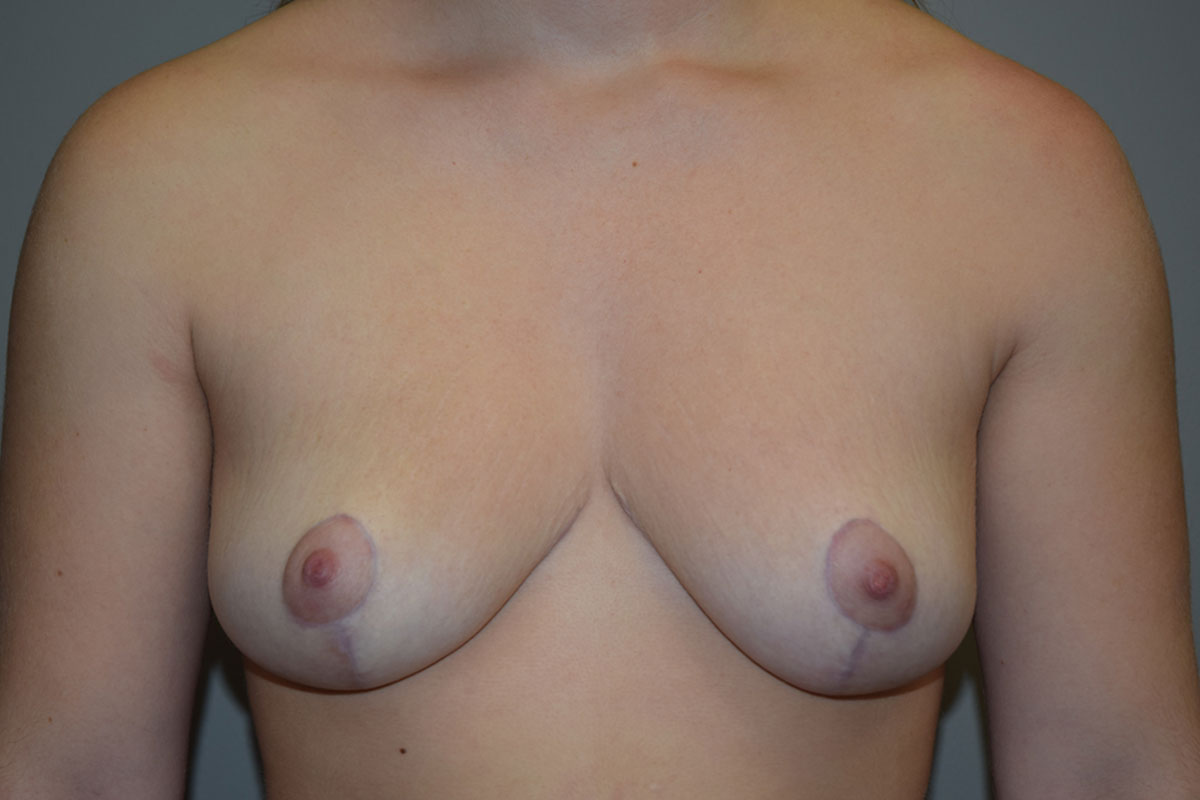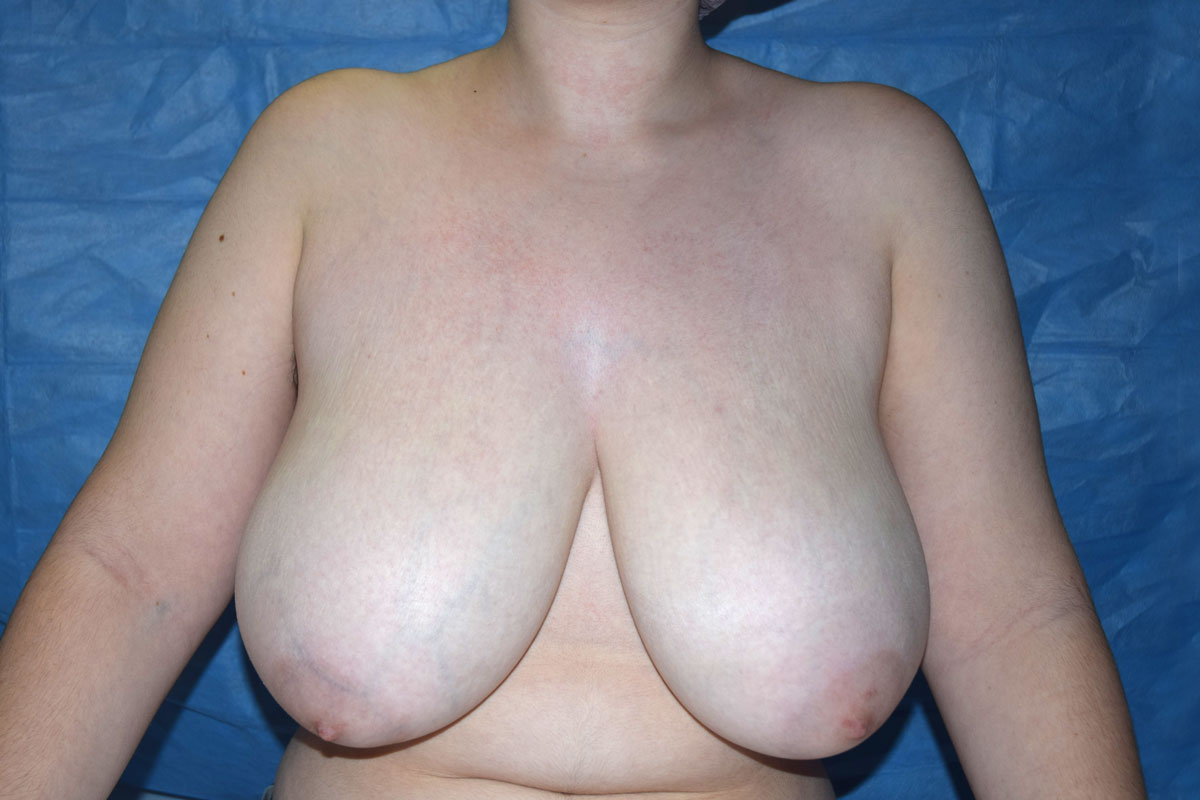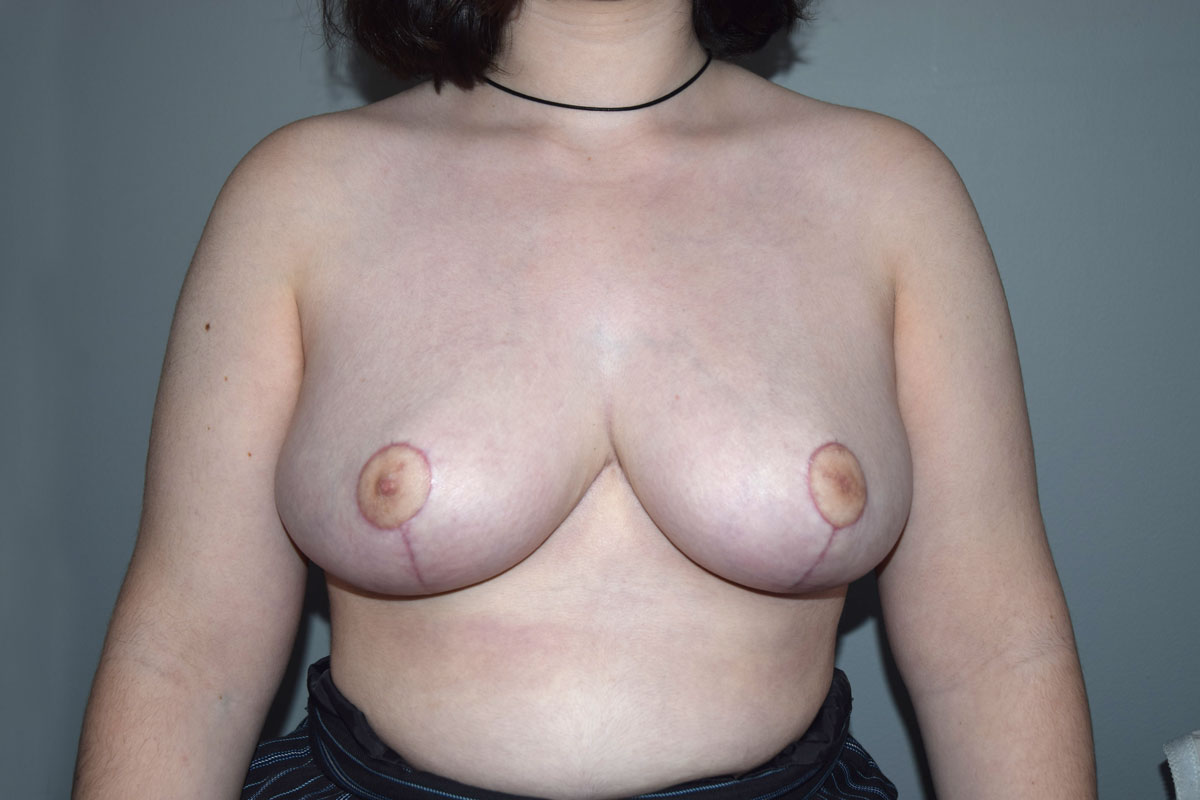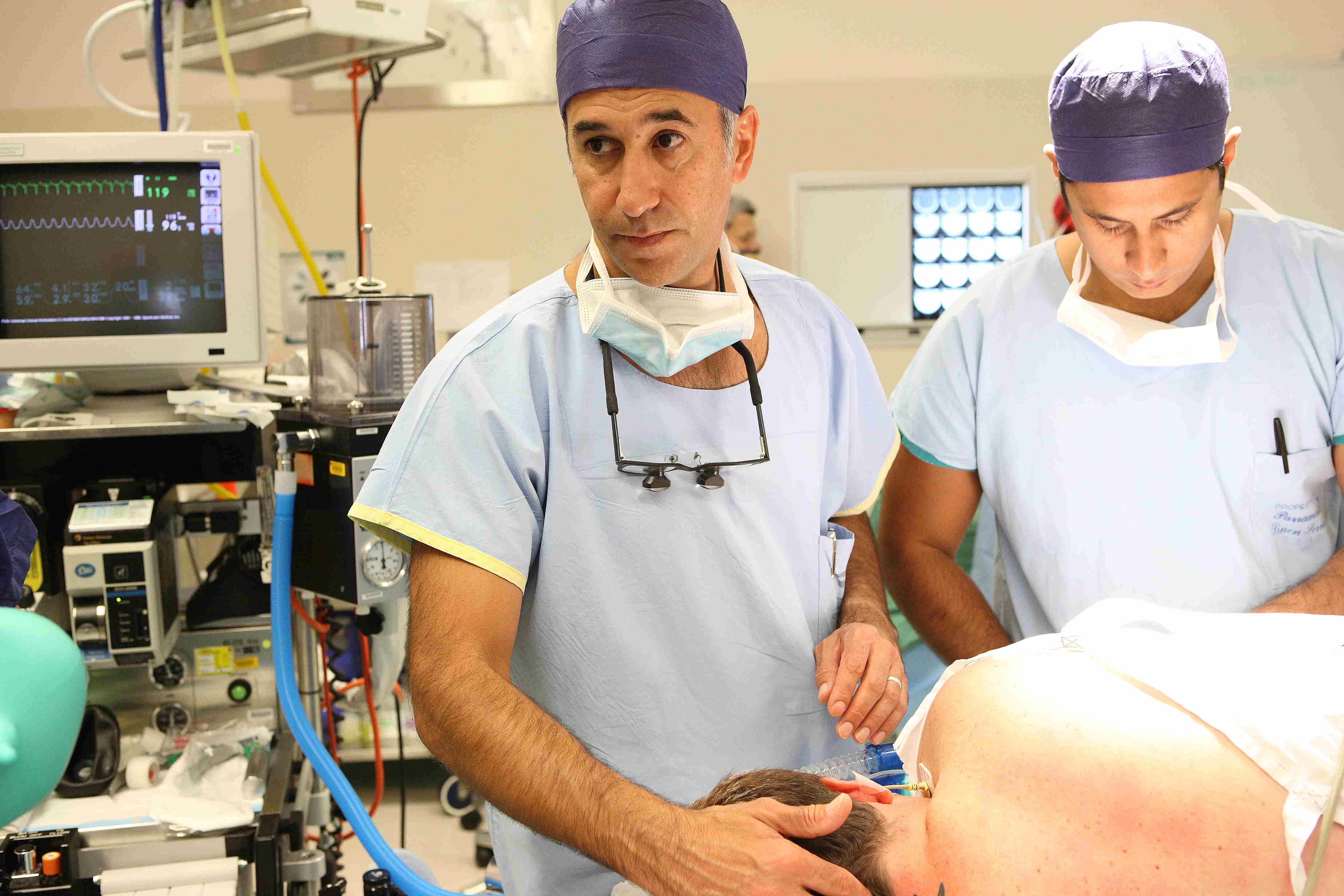Breast Reduction
Large and heavy breasts carry with them a number of concerns relating to both physical comfort and self image. Back, neck and shoulder discomfort are common complaints. Headache and breast discomfort are also frequently reported. Having a large bust can make it difficult to buy well fitting clothes, or the type of clothing a woman would like to wear. Sporting and physical activity can be made uncomfortable and difficult, often making a woman too self conscious to participate. Frequently, in the hotter and humid summer months the skin under the breasts can be prone to rashes and irritation.
There are many different techniques of breast reduction and hence, variations in the scars and their positioning. Almost uniformly there is a scar around the nipple connecting to a scar from the lower pole of the nipple to the level of the fold under the breast. Most frequently there is a horizontal scar from the level of the vertical scar in the fold of the breast for a variable length. In general therefore, the scar represents an ‘anchor’ type shape.
The procedure not only reduces the size, volume and weight of the breast, but also improves the breast shape and the position of the nipple is normalised. The aim is to tailor the breast size to the woman’s body and her wishes for size.
Breast reduction is a procedure that has a very high satisfaction rate. It is also a procedure which most women have contemplated for many years, and occasionally decades, before undertaking it. Very frequently women will spontaneously comment following their procedure that they wished that they had the procedure done ‘years ago’.
There are, of course, downsides to any procedure and breast reduction is no different. There are scars on the breast, as described above, which are generally a little red and may become somewhat thickened while they are maturing. This process may go on for some months. In general, once matured, the scars are relatively inconspicuous although not invisible. They are not seen in normal clothing or swimwear.
Sensation to both the breast skin particularly in its lower portion and to the nipple itself is usually altered in the short term. That is, there is a degree of numbness. This generally returns to normal, but may take some months. Nipple hypersensitivity is much less common (5-10%), but can be uncomfortable while it persists. This usually resolves within around 12 weeks.
Further details of the appropriate procedure for any individual woman and exactly what to expect will be discussed at length at your consultation.
There are many reasons why women have breast reduction surgery. If you have breasts which are out of proportion with your body, if you suffer with back, neck and shoulder pain and indentations from your bra, if you are unable to exercise with freedom, if you suffer with irritations and rashes in the fold under your breasts, if you are unable to wear the sort of clothing you wish or indeed that fits you comfortably then you may be a good candidate for a breast reduction procedure. The exact nature of these and the best way to achieve your outcome will be discussed at the time of your personalised consultation with A/Prof Gianoutsos.
A/Prof Gianoutsos performs breast reduction surgery under general anaesthesia usually as an overnight stay but also as a day surgery procedure. Your anaesthetic will be done by one of the expert and experienced specialist anaesthetists with whom A/Prof Gianoutsos works on a regular basis.
The procedure can be performed using a variety of incisions. Most often A/Prof Gianoutsos employs a type of inverted T along with an incision around the nipple. A vertical or “lollipop” type incision can sometimes be used in smaller reductions. In either case, the breast tissue volume is decreased, the nipple is moved to a more ideal position (still attached to the breast tissue, blood vessels and nerves) and the breast skin tightened. As well as a reduction there is also a breast lift performed. Liposuction may also be used particularly towards the side of the chest wall.
Following surgery you will placed into a surgical bra and sometimes a binder. It is unusual for A/Prof Gianoutsos to use drains. You will need to minimize physical activity for 3 to 4 days when you get home. You can shower the day after your surgery and replace the simple dressing yourself each day.
You will usually have one night in hospital after your operation. Where appropriate, A/Prof Gianoutsos may perform your surgery as a day only procedure. If you are not insured, this can be a less expensive option.
After discharge you will be seen at A/Prof Gianoutsos’ rooms at around 5 days to remove your dressings and place surgical tapes on the incision lines. You will generally be seen again the following week for a check up. You will then be reviewed at around 6 weeks and then six and twelve months.
A/Prof Gianoutsos and his staff are available at any time, however, should you have any queries or concerns.
A/Prof Gianoutsos generally recommends a minimum of two weeks off work following your breast reduction surgery. At this point you will still have some swelling and sometimes some bruising but you will be comfortable to do normal day to day activities. Vigorous upper body exercise should be avoided for around 6 weeks.
At, and even before, you return to see A/Prof Gianoutsos for your first postoperative visit, you will notice the reduction in weight in your breasts. Many women comment upon the fact that they experience improvement in their back, neck and shoulder discomfort very early on. Your swelling will resolve over around 6 weeks at which point your final result will be seen although subtle changes can occur over a longer period.
All surgery carries at least some degree of risk. These are minimized by ensuring you are as healthy as possible and prepared for the operation, by selecting a properly qualified and experienced surgeon and allowing yourself a proper recovery period. The particular risks as well as the expected perioperative course will be discussed in detail with you at your consultation and you will have the opportunity to ask any questions.





Our Procedures

Our philosophy is to treat all patients as we would be expected to be treated ourselves.
A/Prof. Mark Gianoutsos


